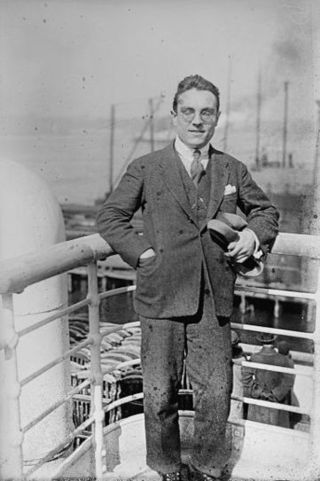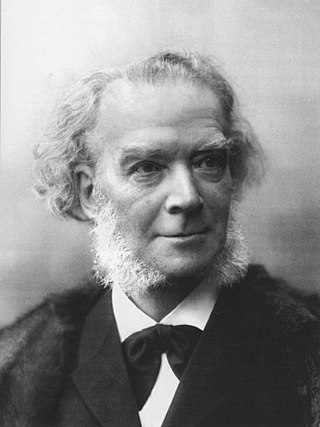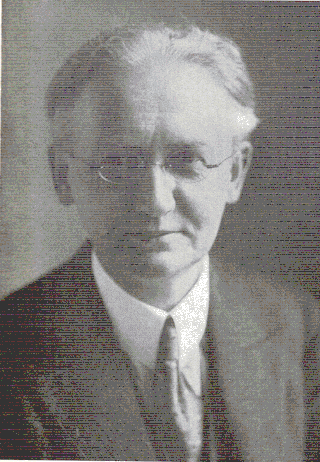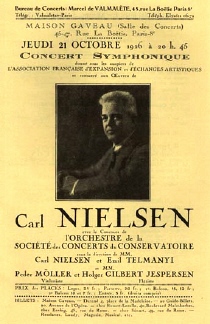
Carl August Nielsen was a Danish composer, conductor, and violinist, widely recognized as his country's most prominent composer.
A quintet is a group containing five members. It is commonly associated with musical groups, such as a string quintet, or a group of five singers, but can be applied to any situation where five similar or related objects are considered a single unit.

Emil Telmányi was a Hungarian violinist.
Carl Nielsen's Concerto for Clarinet and orchestra, op. 57 [D.F.129] was written for Danish clarinetist Aage Oxenvad in 1928. The concerto is presented in one long movement, with four distinct theme groups.

Carl Heinrich Carsten Reinecke was a German composer, conductor, and pianist in the mid-Romantic era.

Maskarade (Masquerade) is an opera in three acts by Carl Nielsen to a Danish libretto by Vilhelm Andersen, based on the comedy by Ludvig Holberg. It was first performed on 11 November 1906 at Royal Danish Theatre, Copenhagen. Maskarade has enjoyed enduring popularity in Denmark where it is considered to be the country's national opera.

The Royal Danish Academy of Music, or Royal Danish Conservatory of Music, in Copenhagen is the oldest professional institution of musical education in Denmark as well as the largest, with approximately 400 students. It was established in 1867 as Kjøbenhavns Musikkonservatorium by Niels Gade – who was also the first rector –, J.P.E. Hartmann and Holger Simon Paulli on the basis of a testamentary gift from the jeweler P.W. Moldenhauer, and with inspiration from the Leipzig Conservatory and a conservatory founded by Giuseppe Siboni in Copenhagen in 1827. Carl Nielsen was a teacher in the period 1916–1919 and the rector during the last year of his life.

Peter Jørgensen Gram was a Danish composer and organist.

Saul og David is the first of the two operas by the Danish composer Carl Nielsen. The four-act libretto, by Einar Christiansen, tells the Biblical story of Saul's jealousy of the young David, taken from the Book of Samuel. The first performance was at the Royal Danish Theatre, Copenhagen, on 28 November 1902.
Herman David Koppel, known in Denmark as Herman D. Koppel, was a composer and pianist of Jewish origin. Born in Copenhagen, he fled the Nazis with his family to Sweden in 1943. He wrote 7 symphonies, numerous concertos, 6 string quartets and other chamber music, piano works, operas and film music.
Franz Adolf Syberg was a Danish composer.
Jørgen Jersild was a Danish composer and music educator. He was a pupil of Poul Schierbeck and Albert Roussel. Jersild worked from 1953 to 1975 as a professor of ear training by The Royal Danish Academy of Music in Copenhagen.
The Danish Quartet is a name which has been carried by four Danish quartets:

Carl Nielsen's Concerto for Flute and Orchestra was written in 1926 for Holger Gilbert-Jespersen, who succeeded Paul Hagemann as flautist of the Copenhagen Wind Quintet. The concerto, in two movements, was generally well received at its premiere in Paris in October 1926 where Nielsen had introduced a temporary ending. The first complete version was played in Copenhagen the following January. The flute concerto has become part of the international repertoire.

Carl Nielsen's Wind Quintet, or as indicated by the original score, the Kvintet for Flöte, Obo, Klarinet, Horn og Fagot, Op. 43, was composed early in 1922 in Gothenburg, Sweden, where it was first performed privately at the home of Herman and Lisa Mannheimer on 30 April 1922. The first public performance was on 9 October 1922 in the smaller hall at the Odd Fellows Mansion in Copenhagen. It is considered a staple of the repertoire for wind quintet.
Carl Nielsen's Serenata in vano, a quintet for clarinet, bassoon, horn, cello and double-bass, FS 68, was composed in 1914. It was apparently written at short notice, commissioned by Ludvig Hegner of the Royal Theatre for a tour of the Danish provinces.
Aage Oxenvad was a Danish clarinetist who played in the Royal Danish Orchestra from 1909. Carl Nielsen wrote his Clarinet Concerto for Oxenvad who played at its premiere in 1928.
Events from the year 1822 in Denmark.
Orla Albert Vilhelm Rosenhoff was a Danish musician, the son of Caspar Claudius Rosenhoff, a teacher.

Holger Gilbert-Jespersen was a Danish flutist, orchestral musician and academic flute teacher. In 1926, Carl Nielsen's Flute Concerto was written for, dedicated to, and first performed by Gilbert-Jespersen in Paris. He was a member of the Royal Danish Orchestra from 1927 to 1956 as well as a professor at the Royal Danish Academy of Music from 1927 to 1962, where he trained generations of flutists.









